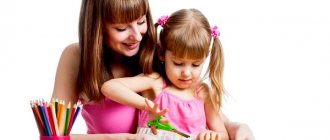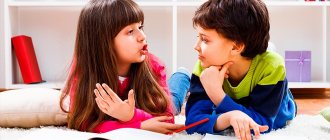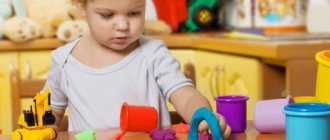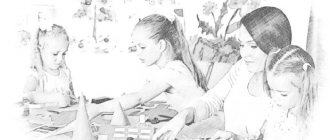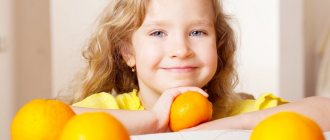Social factors
What influences a child's socialization?
- family
- kindergarten
- child's environment
- children's institutions (kindergarten, development center, clubs, sections, studios)
- child's activities
- television, children's press
- literature, music
- nature
All this makes up the child’s social environment.
When raising a child, do not forget about the harmonious combination of various ways, means and methods.
Practical situations of humanistic choice.
Preschoolers are faced with a choice : respond to the problems of other children or prefer personal interests and show indifference?
For example, keep the drawing for yourself or include it in a general message to a sick peer; respond to a request for help or ignore it?
The behavior of children in situations of choice helps to better understand the characteristics of their social, moral and emotional development.
2. Practical situations of a problematic nature such as “What to do, what to do?” personality behavior education preschool
These are various difficult situations that we create in order to awaken children’s initiative, independence, intelligence, responsiveness, and willingness to look for the right solutions.
Situations: there are no paints of certain colors, there is not enough plasticine for modeling. Children independently look for solutions and solve problems together.
3. Practical situations “We are the oldest in kindergarten .”
Children learn to take care of children, they develop a sense of self-esteem, a kind attitude towards little ones, and an understanding of their problems.
You can organize the situations “We will delight the kids with gifts made by ourselves”, “We will prepare a concert for the kids”, “We will show a fairy tale”, “We will help make a snow slide”, “We will teach the kids how to dance in circles”.
4. The following situations are like “We are friends with schoolchildren.”
Senior preschoolers gain experience in collaborating with school students: “We are having a sports festival,” “Joint literary quiz in the library,” “We are waiting for our teachers.”
Participation in such situations deepens interest in school and relieves anxiety associated with upcoming schooling. At the same time, valuable experience of inter-age communication is formed, which is important not only for preschoolers, but also for students.
5. Children are very fascinated by situations like “Teach your friend what you can do yourself.”
We encourage children to show attention to each other, mutual assistance and cooperation. Children share their experiences, we help them enter the role of “teacher”, i.e. be patient, attentive and forgiving to the mistakes and difficulties of peers.
6. Children also participate in imitation games : changing emotional and physical states, imitating states of nature, etc.
I would like to emphasize that our constant assistant in the social and personal development of children is the family . Only in cooperation with close adults can high educational results be achieved.
Interaction with family is effective provided there is trust in each other, understanding and acceptance of common goals, methods and means of social and personal development.
It is necessary to instill in a child a love for those closest to him - his home and kindergarten. This is the basis of moral education, the first and important stage.
A child must first of all recognize himself as a member of the family, an integral part of his small homeland, then as a citizen of Russia, and only then as an inhabitant of planet Earth. We go from near to far.
What is the social situation?
In the most general sense, the social situation of the development of a preschooler is one of the fundamental components of a particular age period. It characterizes the main aspects of a child’s interaction with the people around him: family, peers, other adults. The social situation of each age period has its own distinctive characteristics. This is primarily due to the fact that interaction mechanisms are gradually expanding; the significance of the role of certain people changes. This allows you to observe the dynamics of changes in the social situation and choose the most appropriate method of interaction for a given case.
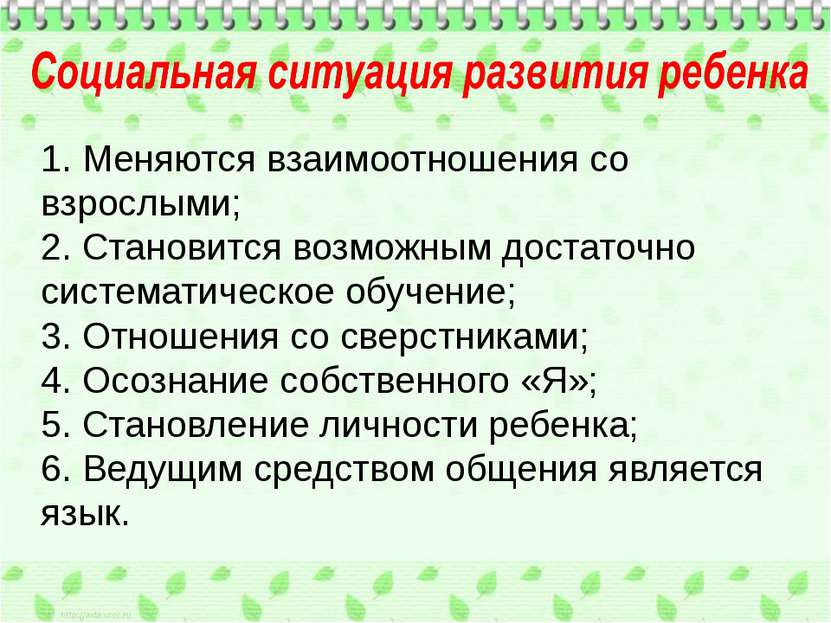
Social situation - manifestations
Social maladjustment
If, when a child enters a certain group of peers, there is no conflict between generally accepted standards and the child’s individual qualities, then it is considered that he has adapted to the environment. If such harmony is disturbed, the child may develop self-doubt, isolation, depressed mood, reluctance to communicate, and even autism. Children rejected by a certain social group are aggressive, uncommunicative, and have inadequate self-esteem.
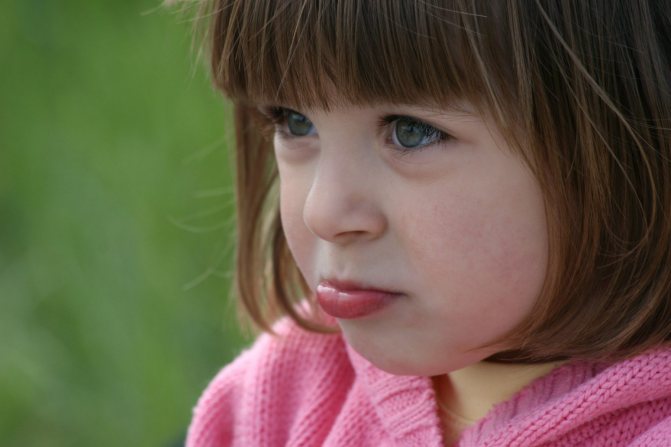
It happens that a child’s socialization is complicated or slowed down for physical or mental reasons, as well as as a result of the negative influence of the environment in which he grows up. The result of such cases is the emergence of antisocial children, when the child does not fit into social relationships. Such children need psychological help or social rehabilitation (depending on the degree of difficulty) in order to properly organize the process of their adaptation to society.
The role of play in the socialization of a preschooler’s personality
The content of the game is relationships between people, children create models of these relationships. Children form stable play communities of 3 - 4 people. The game has many actions that convey the child's role relationships with other participants in the game. The role in the game is not only called, there is an extended role appeal directed to other participants in the game. Thus, the child speaks on behalf of the character in the game. Thus, the nature of role relationships is revealed through language. The actions in the game are winding, short, one action is replaced by another, forming a dynamic long plot. It is typical for children of this age to want to know as much as possible about what they are playing. The main place in the game is occupied by episodes from fairy tales, films and cartoons, and especially social actions. The content of play activity, determined by knowledge about the surrounding life, is also the main condition for a child’s learning to play. Of course, not every game can develop a child morally. Only a "good" game can fulfill this function. We can identify a set of criteria that characterize them. The main criteria for such play in older preschool age are passion for games, the content of which reflects characteristic social phenomena (long stay in roles, compliance of behavior with the accepted role of an adult); content of the game's goals; variety of topics and roles (desire to fulfill the role of an adult in any profession); manifestation of moral feelings (empathy, pleasure from communication, achieved results).
1) In the game, the child learns to fully communicate with peers.
2) The child learns to subordinate his impulsive desires to the rules of the game. There is a subordination of motives - “I want” begins to obey “this is impossible” or “this is necessary.”
3) The game intensively develops all mental processes, forms the first moral feelings (what is bad and what is good).
4) New motives and needs are formed (competitive, gaming motives, the need for independence).
5) New types of productive activities are formed in the game (drawing, modeling, appliqué).
In connection with the introduction of FGT into the educational process of preschool educational institutions, the forms and methods of organizing educational activities have changed. In early childhood groups and preschool institutions, the socialization of children among their peers and their development are a priority, which allows for the successful adaptation of children to the conditions of a kindergarten.
Chapter II Experimental and practical work on the formation of social and communicative skills in children of senior preschool age.
2.1 Diagnosis of the stage of development of social skills in children of senior preschool age.
Interpersonal relationships in older preschool children.
This diagnostic technique was carried out on a group of children of senior preschool age (short-term stay group of children of the Sarajevo General Education Secondary School) in the amount of 12 people. The children were 6-7 years old. Among them were seven girls and five boys.
For the purposes of the study, the “Mask test “I am different” method developed by A.M. was used. Shchetinina. This technique is aimed at identifying the child’s communication with peers, determining his status place in the group.
Stimulating material. A set of four masks drawn on paper, symbolizing good and bad moods, the desire for dominance or submission.

